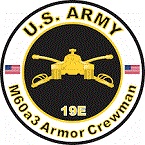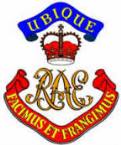RangerJoe
Posts: 13450
Joined: 11/16/2015
From: My Mother, although my Father had some small part.
Status: offline

|
quote:
ORIGINAL: BBfanboy
quote:
ORIGINAL: Ian R
quote:
ORIGINAL: Nomad
Basically the Mk-15 and Mk-14 were very similar, designed at the same time. They both had the same exploder and both ran deeper that set.
As the Mk-14 deficiencies were corrected, the Mk-15 ones were too. The Mk-15 was not a bad torpedo when it problems were fixed.
I read this really interesting article about the whole dud torpedo thing - basically the argument was they weren't duds, they were just misused. it goes like this:
- The new magnetic exploders were set so that the torpedo went off when it was a certain distance from the ship.
- The torpedos were designed so they ran at a depth that would take them under the ship and if all worked, they would go off under the keel, so the shockwave could hit the ship below the torpedo protection bulkheads and break its back.
- Unfortunately no-body explained this to the sub skippers, who not only continued to take hull shots, but interfered with the depth settings so the torpedo ran shallow; this of course meant that if it did explode at the designed distance from the ship, the shockwave dissipated against the horizontal torpedo protection/armour belt of the target. Think of a circle and its radius, with the target in the middle.
- There were also explosive duds which is a different problem.
So basically, the author reckoned that had the sub skippers been educated properly, they would have understood that having their torpedos run deep, and explode under the keel of the target is actually a good idea .... (which is pretty much how torpedoes are set up to operate nowadays).
That theory sounds like the BuShips argument against the sub skippers for a year and a half. But the sub crews were not stupid, and they testified they tried every combination of depth settings and exploder type (I gather the magnetic exploder could be turned off in favour of the contact exploder for shallow water shots). Testing that was eventually done showed the depth setting problem - they set the depth wanted and fired at a sheet of some kind which showed the actual depth of impact.
Tests also showed that the contact exploder bent when impact was close to 90º to the hull. It was made of aluminum or some light alloy which, when replaced with good strong steel, worked. Not sure if the US was using the copper shaped charge cone in the warhead at that time but that would necessarily mean the firing pin was quite long to reach to the bottom of the cone.
From what I remember reading about this, the Earth's magnetic field in the Western Pacific causes the ships' magnetic fields to run more horizontally than vertically which sets off the magnetic detonator too soon, something that BuOrd dd not realize. They fired the torpedoes trough a series of nets to see how the torpedoes moved like a porpoise, from the actual depth setting to too deep by about 10 to 11 feet, on average. Part of the problem as that during the testing, the torpedoes id not have the same weight as the warhead so it was lighter.
The first, improved firing pin was made from a wrecked Japanese aircraft propeller. The aluminum was light enough to travel back fast enough to detonate the exploder before the front of the torpedo deformed, the slower heavier steel firing pin would be trapped before hitting the exploder if the impact angle was close to 90 degrees, in other words, normally the best angle.
_____________________________
Seek peace but keep your gun handy.
I'm not a complete idiot, some parts are missing!
“Illegitemus non carborundum est (“Don’t let the bastards grind you down”).”
― Julia Child
|
 Printable Version
Printable Version














 New Messages
New Messages No New Messages
No New Messages Hot Topic w/ New Messages
Hot Topic w/ New Messages Hot Topic w/o New Messages
Hot Topic w/o New Messages Locked w/ New Messages
Locked w/ New Messages Locked w/o New Messages
Locked w/o New Messages Post New Thread
Post New Thread